 W
WTriangulum is a small constellation in the northern sky. Its name is Latin for "triangle", derived from its three brightest stars, which form a long and narrow triangle. Known to the ancient Babylonians and Greeks, Triangulum was one of the 48 constellations listed by the 2nd century astronomer Ptolemy. The celestial cartographers Johann Bayer and John Flamsteed catalogued the constellation's stars, giving six of them Bayer designations.
 W
WAlpha Trianguli is a spectroscopic binary star in the constellation of Triangulum. Based on parallax measurements obtained during the Hipparcos mission, it is approximately 63.3 light-years distant from the Sun. The brighter or primary component is named Mothallah.
 W
WArp 166 is a pair of interacting elliptical galaxies approximately 225 million light-years away from Earth in the constellation of Triangulum. The two galaxies, NGC 750 and NGC 751, are listed together as Arp 166 in the Atlas of Peculiar Galaxies.
 W
WBeta Trianguli is the Bayer designation for a binary star system in the constellation Triangulum, located about 127 light years from Earth. Although the apparent magnitude is only 3.0, it is the brightest star in the constellation Triangulum.
 W
WDelta Trianguli is a spectroscopic binary star system approximately 35 light-years (11 pc) away in the constellation of Triangulum. The primary star is a yellow dwarf, while the secondary star is thought to be an orange dwarf. It has an apparent magnitude of +4.87 and forms an optical (line-of-sight) triple with Gamma Trianguli and 7 Trianguli.
 W
WEpsilon Trianguli, Latinized from ε Trianguli, is a binary star system in the northern constellation of Triangulum. Based upon measurement of its trigonometric parallax, it is approximately 390 light years from Earth.
 W
WGamma Trianguli is a star in the constellation Triangulum located approximately 112 light years from Earth. It has an apparent magnitude of +4.01 and forms an optical (line-of-sight) triple with Delta Trianguli and 7 Trianguli.
 W
WHD 13189 is an 8th magnitude star in Triangulum constellation.
 W
WIota Trianguli, Latinized from ι Trianguli, is a quadruple star system in constellation of Triangulum. It is approximately 290 light years from Earth.
 W
WThe Triangulum subgroup is made up of the Triangulum Galaxy (M33) and its satellites. Although the Triangulum Galaxy does not have any proven satellite galaxies, a number of galaxies are suspected of being in the system.
 W
WLSPM J0207+3331 is, as of 2019, the oldest and coldest known white dwarf star to host a circumstellar disk, located 145 light-years from Earth.
 W
WM33 X-7 is a black hole binary system in the galaxy M33. The system is made up of a stellar-mass black hole and a companion star. M33 X-7 is the largest known stellar black hole with an estimated mass of 15.65 times that of the Sun (M☉).[7] The total mass of the system is estimated to be around 85.7 M☉, which would make it the most massive black hole binary system.
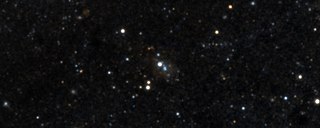 W
WM33-013406.63, also known as B416, is a blue supergiant star in the constellation of Triangulum. It is located within the Triangulum Galaxy, which is approximately 2,380,000–3,070,000 light years away from Earth. It is potentially the most luminous star ever discovered, estimated to be approximately between 3 and 10 million times more luminous than the Sun, although it is thought likely to be a multiple star system
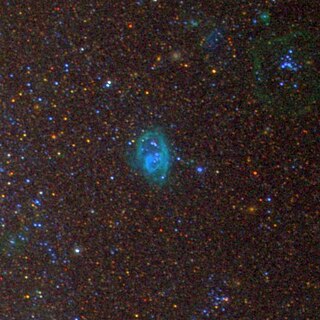 W
WNGC 588 is a diffuse nebula located in the outskirts of the galaxy Messier 33, within the Triangulum constellation. It was discovered October 2 1861 by the German-Danish astronomer Heinrich d'Arrest.
 W
WNGC 595 is an H II region in the Triangulum Galaxy. It was discovered by Heinrich Ludwig d'Arrest on October 1, 1864.
 W
WNGC 604 is an H II region inside the Triangulum Galaxy. It was discovered by William Herschel on September 11, 1784. It is among the largest H II regions in the Local Group of galaxies; at the galaxy's estimated distance of 2.7 million light-years, its longest diameter is roughly 1,520 light years (~460 parsecs) (14.38031 exameters), over 40 times the size of the visible portion of the Orion Nebula. It is over 6,300 times more luminous than the Orion Nebula, and if it were at the same distance it would outshine Venus. Its gas is ionized by a cluster of massive stars at its center with 200 stars of spectral type O and WR, a mass of 105 solar masses, and an age of 3.5 million years; however, unlike the Large Magellanic Cloud's Tarantula Nebula central cluster (R136), NGC 604's one is much less compact and more similar to a large stellar association.
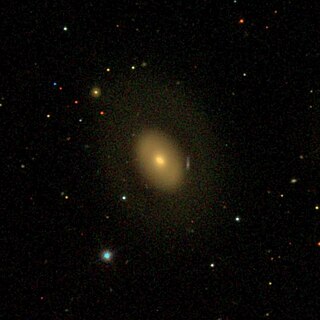 W
WNGC 608 is a lenticular galaxy in the constellation Triangulum. It is estimated to be about 230 million light-years from the Milky Way. It has a diameter of approximately 130,000 light-years. NGC 608 was discovered on November 22, 1827 by astronomer John Herschel.
 W
WNGC 634 is a spiral galaxy, lying at a distance of 217.1 megalight-years away from the Milky Way in the northern constellation of Triangulum. This object was discovered back in the nineteenth century by French astronomer Édouard Stephan. It is inclined by an angle of 82.4° to the line of sight from the Earth, and thus is being viewed nearly edge on.
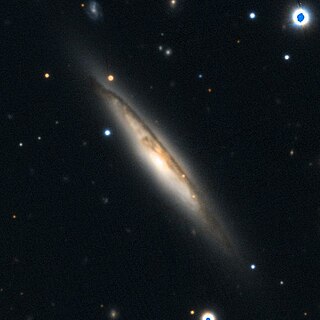 W
WNGC 669 is an edge-on spiral galaxy with an active galactic nucleus located 200 million light-years away in the constellation Triangulum. NGC 669 was discovered by astronomer Édouard Stephan on November 28, 1883 and is a member of Abell 262.
 W
WNGC 670 is a lenticular galaxy located in the Triangulum constellation about 165 million light years from the Milky Way. It was discovered by the German-British astronomer William Herschel in 1786.
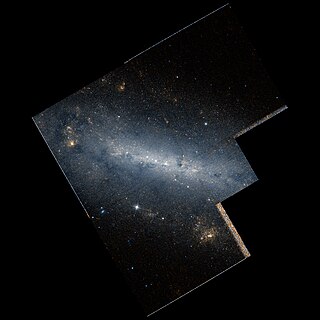 W
WNGC 672 is a spiral galaxy in the northern constellation of Triangulum, positioned around 2° to the southwest of the star Alpha Trianguli. The original object designated NGC 672 was discovered by the German-born astronomer William Herschel on 26 October 1786, but this was later cataloged as NGC 614. The object now identified as NGC 672 was discovered by John Herschel on 11 November 1827.
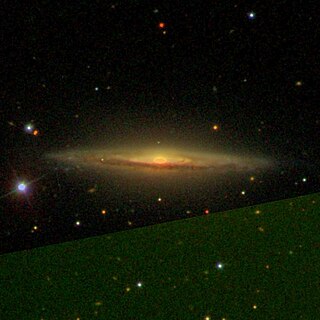 W
WNGC 684 is a spiral galaxy approximately 135 million light-years away from Earth in the constellation of Triangulum. It was discovered by William Herschel on October 26, 1786. Edward Swift, Lewis' son, found this galaxy again on 18 Jan 1890 while "searching for Swift's Comet." and it was reported as a new object in list IX-6.
 W
WNGC 688 is a barred spiral galaxy with starburst activity located 190 million light-years away in the constellation Triangulum. It was discovered by astronomer Heinrich d'Arrest on September 16, 1865 and is a member of the galaxy cluster Abell 262.
 W
WNGC 736 is an elliptical galaxy in the constellation Triangulum. It is an estimated 200 million light years from the Milky Way and has a diameter of approximately 85,000 light years. NGC 736 was discovered on September 12, 1784 by the German-British astronomer William Herschel.
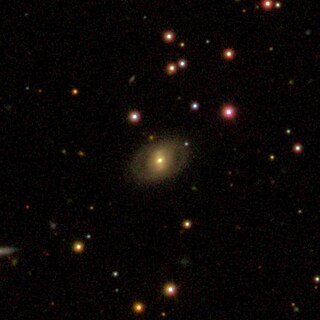 W
WNGC 739 is a spiral galaxy approximately 193 million light-years away from Earth in the constellation of Triangulum.
 W
WNGC 740 is a barred spiral galaxy located in the Triangulum constellation. It is estimated to be 210 million light-years from the Milky Way and has a diameter of about 85,000 light-years. It was discovered by the Irish engineer Bindon Stoney, an assistant to William Parsons.
 W
WNGC 750 is an elliptical galaxy approximately 225 million light-years away from Earth in the constellation of Triangulum. It forms a close pair of interacting galaxies together with the nearby NGC 751 galaxy. The pair is listed as Arp 166 in the Atlas of Peculiar Galaxies.
 W
WNGC 751 is an elliptical galaxy approximately 225 million light-years away from Earth in the constellation of Triangulum. It forms a close pair of interacting galaxies together with the nearby NGC 750 galaxy. The pair is listed as Arp 166 in the Atlas of Peculiar Galaxies.
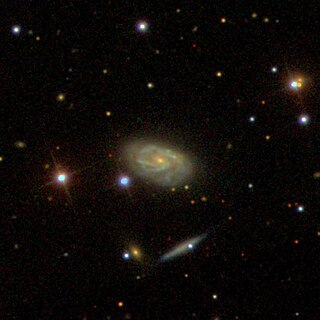 W
WNGC 769 is a spiral galaxy located in the constellation Triangulum about 197 million light years from the Milky Way. It was discovered by the American astronomer Truman Safford in 1866.
 W
WNGC 777 is an elliptical galaxy in the constellation of Triangulum. It was discovered by William Herschel on September 12, 1784.
 W
WNGC 784 is a barred spiral galaxy about 16.0 Mly away in the constellation Triangulum. NGC 784 is located within the Virgo Supercluster.
 W
WNGC 804 is a lenticular galaxy located in the Triangulum constellation about 231 million light-years from the Milky Way. It was discovered by the American astronomer Lewis Swift in 1885. This galaxy was also observed by the French astronomer Guillaume Bigourdan the December 24, 1897 and it has been added to the Index Catalogue under the symbol IC 1773.
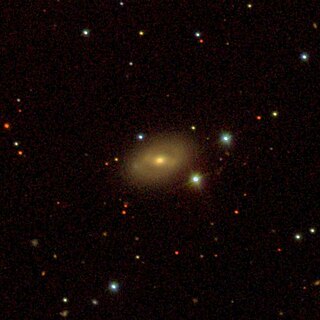 W
WNGC 805 is a lenticular galaxy approximately 194 million light-years away from Earth in the constellation of Triangulum. It was discovered by German astronomer Heinrich Louis d'Arrest on September 26, 1864 with the 11-inch refractor at Copenhagen.
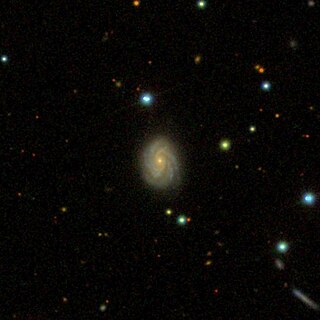 W
WNGC 819 is a spiral galaxy approximately 302 million light-years away from Earth in the constellation of Triangulum. It forms a visual pair with the galaxy NGC 816 5.7' WNW.
 W
WNGC 860 is an elliptical galaxy located in the constellation Triangulum. It is about 410 million light-years from the Milky Way. It was discovered by the French astronomer Édouard Stephan in 1871.
 W
WNGC 861 is a spiral galaxy in the constellation Triangulum. It is estimated to be 360 million light-years from the Milky Way and has a diameter of approximately 165,000 light-years. The object was discovered on September 18, 1865 by Heinrich d'Arrest.
 W
WNGC 890 is a lenticular galaxy in the constellation Triangulum. It is estimated to be 180 million light-years from the Milky Way and has a diameter of approximately 130,000 ly. NGC 890 was discovered on September 13, 1784 by Wilhelm Herschel.
 W
WNGC 925 Amatha Galaxy is a barred spiral galaxy located about 30 million light-years away in the constellation Triangulum. The morphological classification of this galaxy is SB(s)d, indicating that it has a bar structure and loosely wound spiral arms with no ring. The spiral arm to the south is stronger than the northern arm, with the latter appearing flocculent and less coherent. The bar is offset from the center of the galaxy and is the site of star formation all along its length. Both of these morphological traits—a dominant spiral arm and the offset bar—are typically characteristics of a Magellanic spiral galaxy. The galaxy is inclined at an angle of 55° to the line of sight along a position angle of 102°.
 W
WNGC 931 is a spiral galaxy located in the constellation Triangulum. It is located at a distance of circa 200 million light years from Earth, which, given its apparent dimensions, means that NGC 931 is about 200,000 light years across. It was discovered by Heinrich d'Arrest on September 26, 1865. It is classified as a Seyfert galaxy.
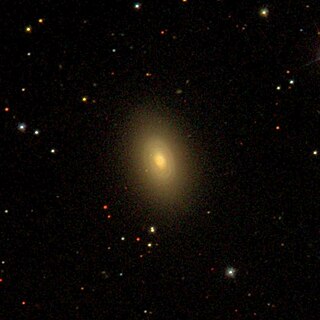 W
WNGC 940 is a lenticular galaxy in constellation triangulum. It is estimated to be 222 million light-years from the Milky Way and has a diameter of approximately 80,000 ly. NGC 940 was discovered by Heinrich d'Arrest.
 W
WNGC 941 is an intermediate spiral galaxy in the constellation triangulum. It is an estimated 55 million light-years from the Milky Way and has a diameter of approximately 55,000 light years. The galaxies NGC 926, NGC 934, NGC 936, NGC 955 are located in the same sky area. NGC 941 was discovered by the astronomer William Herschel using on 6 January 1785.
 W
WNGC 953 is an elliptical galaxy in the constellation Triangulum. It has an apparent magnitude of 14.5. It was discovered by the German astronomer Heinrich Louis d'Arrest on September 26, 1865.
 W
WNGC 970 is an interacting galaxy pair in the constellation Triangulum. It is estimated to be 471 million light-years from the Milky Way and has a diameter of approximately 100,000 ly. The object was discovered on September 14, 1850 by Bindon Blood Stoney.
 W
WNGC 973 is a giant spiral galaxy located in the constellation Triangulum. It is located at a distance of circa 200 million light years from Earth, which, given its apparent dimensions, means that NGC 973 is about 230,000 light years across. It was discovered by Lewis Swift on October 30, 1885.
 W
WNGC 1060 is a lenticular galaxy approximately 256 million light-years away from Earth in the constellation of Triangulum. It was discovered by William Herschel on September 12, 1784.
 W
WRD1 or 0140+326 RD1 is a distant galaxy, it once held the title of most distant galaxy known. RD1 was discovered in March 1998, and is at z = 5.34, and was the first object found to exceed redshift 5. It bested the previous recordholders, a pair of galaxies at z=4.92 lensed by the galaxy cluster CL 1358+62. It was the most distant object known to mankind for a few months in 1998, until BR1202-0725 LAE was discovered at z = 5.64.
 W
WRomano's Star is a luminous blue variable star located in the Messier 33 galaxy in the constellation of Triangulum.
 W
WThe Triangulum Galaxy is a spiral galaxy 2.73 million light-years (ly) from Earth in the constellation Triangulum. It is catalogued as Messier 33 or NGC 598. The Triangulum Galaxy is the third-largest member of the Local Group of galaxies, behind the Milky Way and the Andromeda Galaxy. It is one of the most distant permanent objects that can be viewed with the naked eye.